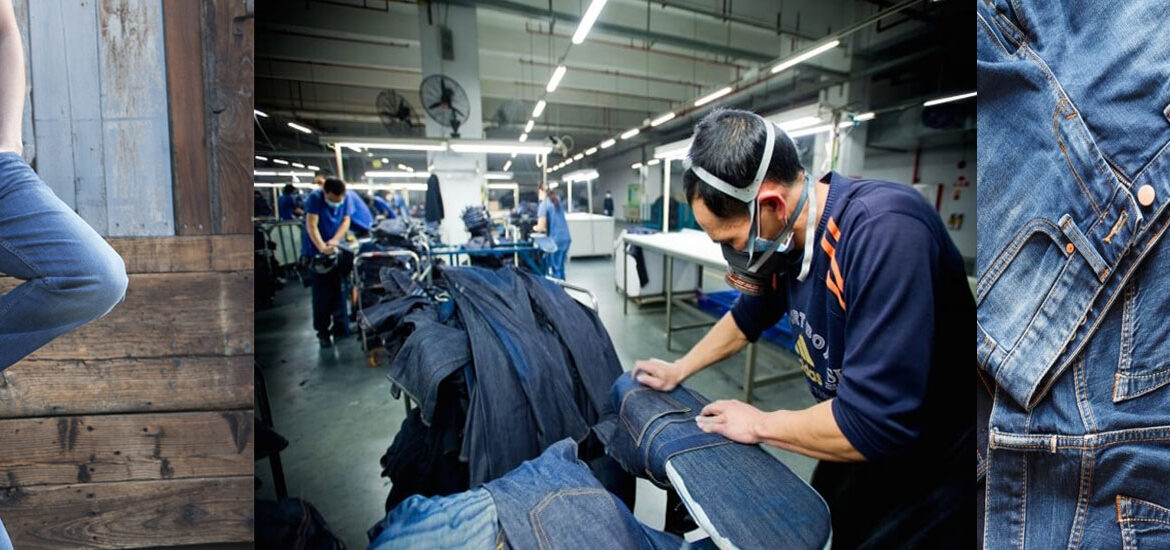Every day, international commerce grows, resulting in record-breaking imports and exports throughout the world. Countries that create goods for export generate far more than they can consume in their own country. The world’s top exporting countries play a crucial role in global commerce. This map of the world’s top exporting countries displays the world’s top exporting countries. These countries export goods and services produced inside their borders to the majority of the world’s countries. Consumers from all around the world then purchase these goods and services. Textiles and garments, for example, are one of these countries’ main exports. Although the jeans industry is cyclical, the market is plagued with skepticism. Many merchants have said unequivocally that denim has reached the “top of the cycle” at this time.
1. Brazil
Santista became the leading denim and cashmere manufacturer in Brazil. It is also the market leader in professional clothes. After the merger of Santista and So Paulo Alpargatas, the firm becomes the country’s largest indigo fabric maker and textile exporter.
2. Turkey
Isko was founded in 1983 and is part of the Sanko conglomerate, which is based in Gaziantep, eastern Turkey, and is owned by the Konokolu family. The company aspires to become a leader in the denim industry. It wants to appeal to more generalist fashion labels as well as established jeans brands.
3. Pakistan
Denim fabric suppliers in Pakistan include Rajwani Denim Mills, Lakhani, Al-Hamra Industries, and others. More than half of all denim is now made in Asia, in countries like China, India, and Pakistan. The use of synthetic fibers is posing a significant challenge to the few remaining denim mills in Europe and North America.
4. Italy
Expert hands work on the manufacture of jeans, giving a mark of real workmanship owing to a keen eye for detail. Products that speak for themselves expose all facets of a vocation that, like art, necessitates technical competence, taste, and originality.
5. Bangladesh
Bangladesh now has 25 denim manufacturing plants with a total investment of approximately 834 million. H&M, Levi’s, Zara, River Island, and Wrangler all source their denim from Bangladesh, while Marks & Spencer considers it a “profitable industry” for denim production. The sector is expected to expand even more as the number of technologically advanced manufacturer’s increases.
6. China
JD United Holdings Co. Ltd., a Chinese business, were finalized today, making Roo Hsing the world’s largest maker of jeans once the transaction goes into effect on August 1st. Xintang is known as the world’s denim capital. Around one in three pairs of jeans sold globally is made in this manufacturing town in Guangdong province.Xintang manufactures a..round two-thirds of China’s denim apparel.
7. Japan
Japan Makes The World’s Best Denim. Kurabo is an internationally famous denim mill and a market leader in the global denim business. Kurabo was founded in 1888 and is now one of Japan’s few remaining cotton spinning enterprises. For over 40 years, we’ve been creating and producing denim goods using our technology in every step of the process.
8. Sri Lanka
The Sri Lankan apparel industry has attracted a number of leading fashion brands, including Ann Taylor, Banana Republic, C&A, Calvin Klein, and others, thanks to a strong government policy of attracting global investors through a variety of special incentives such as Special Industrial Zones, tax holidays, and export duty exemptions.
Sri Lanka exports mostly textiles and garments (52% of total exports) and tea (17%). Others include: spices, gems, coconut products, rubber and fish.
9. North America
Denim fabric manufactured in the United States has been used to create jeans, shorts, overalls, skirts, coats, purses, capris, shoes, dresses, duvet covers, curtains, and shirts, as well as a variety of other items. Denim offers a number of advantages over other clothing fabrics. The versatility of jeans is maybe the most notable feature. Jeans may be worn in a variety of settings. Denim is also cost-effective simply because of its longevity. It also works well as a stretch denim fabric for chef wear and other purposes.
10. India
India dominates denim production in the Asia Pacific area, with a total capacity of 1200 MMPA for denim fabric manufacture. Local consumption accounts for 65 to 70 percent of overall production. There are around 32 denim fabric factories in India, with production capacity ranging from 10 MMPA to 110 MMPA. Nandan Denim has grown to become India’s largest denim fabric maker, with an annual production capacity of 110 million meters. The company’s spinning capacity has been expanded to 141 tons per day, and it has also established a yarn colored shirting capacity of 10 MMPA.
Global denim prices are generally low because to anemic demand and a growing shift to mixes. In terms of trends, denim capacity will continue to drop in the next years as inefficient mills in Europe, North America, and Asia are decommissioned, while new capacity is added in China, India, Turkey, and Brazil. Growth in these nations, as well as a limited number of other manufacturers such as Vietnam, will eventually balance losses in less efficient capacity in other countries. The cyclical nature of the global denim industry appears to imply a five-year cycle, with capacity added and removed as fashion and other variables boost and reduce demand for basic denim.

